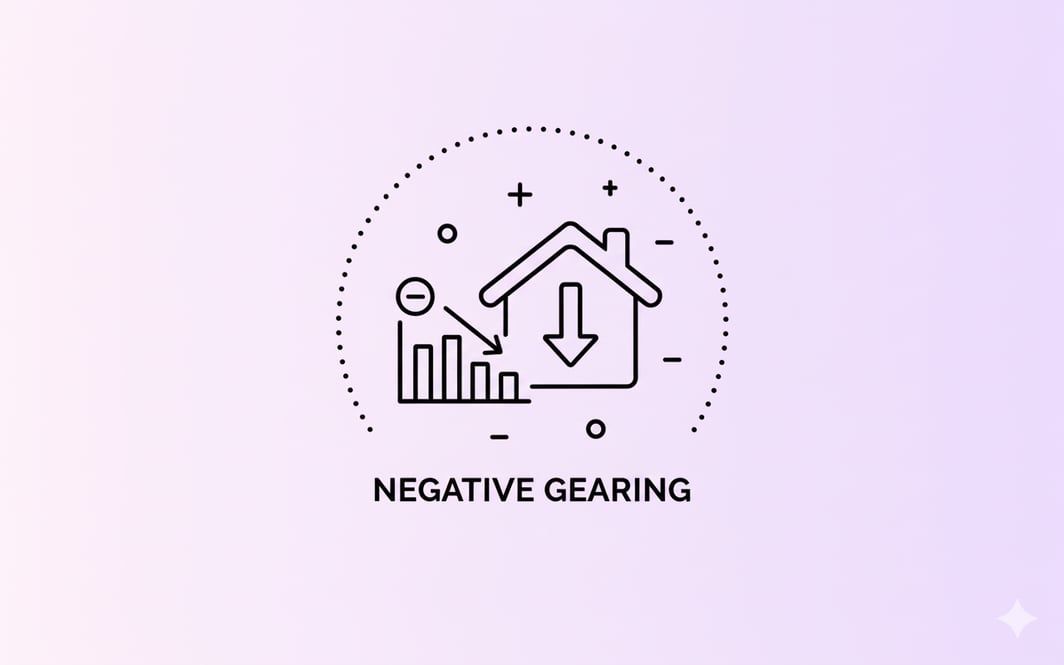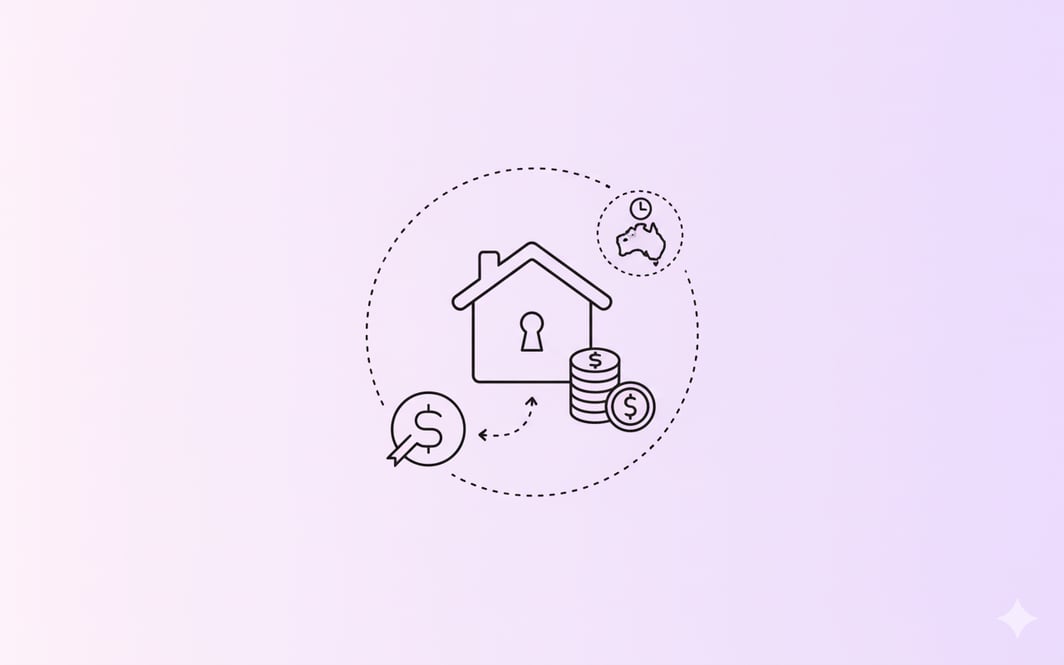RBA cash rate tracker
Real-time analysis and impact assessment of Australia's monetary policy
Historical Rate Trend
RBA Cash Rate Target over time
Previous RBA Cash Rate Target3.60%
See your savings from the latest rate cut
Choose a loan size and term to see how the latest cash rate change affects you.
Current indicators influencing the cash rate cuts
Certain key economic factors influence rate cuts. Learn the current stats here
Economic Highlights
- Underlying inflation is easing significantly, now sitting within the RBA's target range.
- Housing prices continue their strong upward trend, exceeding the one million dollar mark.
- The job market remains robust, with unemployment steady at a low 4.2 percent.
Inflation (CPI)
Monthly inflation rate
What's happening?
Well, the latest reading is 3%, which is up from 2.8% last month. We've seen a pretty significant jump from 1.8% just two months ago, and it's notably higher than the 2.2% we saw a year ago. The pace of price increases is clearly accelerating.
Impact on rates & borrowing
When inflation runs at 3%, central banks usually get antsy. They might consider hiking interest rates to slow things down, which ultimately means borrowing money could become more expensive for everyone.
💡 Key insight
This jump to 3% isn't just a minor fluctuation; it really points to building price pressures. It suggests consumers and businesses are feeling the pinch more intensely now.
Core Inflation
Core inflation, seasonally adjusted
What's happening?
Well, it's pretty clear things are cooling down. We've seen a consistent drop from 3.6% last September to 2.7% now. That's a significant improvement from 6.1% a year ago and even down from 3.2% just six months back. It's good to see this downward trajectory.
Impact on rates & borrowing
This cooling inflation definitely eases pressure on the central bank. If this trend holds, it could pave the way for stable rates, or even rate cuts, which would be good news for borrowers.
💡 Key insight
The persistent decline tells me that past rate hikes are clearly doing their job, bringing inflation back towards more comfortable levels without completely derailing the economy. A positive sign overall.
GDP Growth
Quarterly economic growth
What's happening?
Well, it looks like we're currently holding steady at 0.6%, which is a nice bounce from the 0.3% seen just a quarter ago. Interestingly, this matches our performance from six months back and is slightly up from 0.5% a year ago. We seem to be seeing a bit of an up-and-down pattern, but the latest figure is positive.
Impact on rates & borrowing
When GDP grows steadily like this, central banks might feel less pressure to cut rates. In fact, sustained strong growth could even hint at future rate hikes to manage inflation.
💡 Key insight
The economy isn't exactly sprinting, but it's not stalling either. We're seeing modest, if somewhat uneven, expansion, suggesting a pretty stable, yet unexciting, economic pace.
Unemployment Rate
Seasonally adjusted rate
What's happening?
The unemployment rate is holding pretty steady right now at around 4.24%, just a hair below last month. It's down a bit from two months ago, which is good. However, it's still slightly higher than what we saw at this time last year, suggesting a small cooling.
Impact on rates & borrowing
A stable but slightly elevated unemployment rate might give the central bank a bit more flexibility, perhaps easing pressure to hike rates further if inflation is also contained. They'll be watching for any significant shifts.
💡 Key insight
The job market seems to be finding a new, more balanced footing after a period of intense tightness. It's not as hot as last year, but it's certainly not weak either.
Average Home Price
National average dwelling price
What's happening?
This indicator is definitely on an upward trend. It's now at 1016.7, up from 1002.6 three months ago. While there was a slight dip from 1002.9 six months back, the real story is the substantial jump from 890.5 a year ago. Consistent growth here.
Impact on rates & borrowing
Rising home prices usually signal strong demand and potential inflation. If this trend continues, central banks might feel pressure to hike interest rates, which would make borrowing for mortgages and other loans more expensive.
💡 Key insight
Despite previous rate hikes, the housing market appears resilient with strong demand still pushing dwelling prices higher, raising ongoing affordability questions.
Wage Growth (WPI)
Annual wage price growth
What's happening?
Wage growth has been quite stable recently, sitting at 3.4% for the last two quarters. That's a modest increase from 3.2% both six months ago and this time last year, though slightly down from the 3.5% seen late last year.
Impact on rates & borrowing
Consistent wage growth like this typically makes central banks wary of inflation. It suggests rates might need to stay higher for longer, or could even face pressure to increase if inflation remains stubborn.
💡 Key insight
The persistent 3.4% wage growth highlights that underlying inflationary pressures from labor costs are still very much present, which is a real challenge for achieving price stability.
The ultimate guide to RBA cash rate changes
Impact and opportunities

Pravin Mahajan
Founder
Updated on 30 Sep 2025
- The RBA held the cash rate at its September 2025 meeting. The current cash rate is 3.60%.
- The RBA uses the cash rate to manage inflation within its 2–3% target, and reviews it eight times a year.
- A 25 basis point cut can reduce monthly repayments by around $100 on a $600,000 variable loan.
- The next decision is due on 3-4 November 2025.
What is the cash rate?
The cash rate is the interest rate set by the Reserve Bank of Australia (RBA) for overnight loans between commercial banks. It influences the broader economy by guiding interest rates on mortgages, personal loans, savings accounts, and other financial products.
When banks borrow or lend money overnight, they do so through the interbank market. The RBA intervenes in this market to maintain the cash rate close to its official target. This target becomes the foundation for setting interest rates across the economy.
Changes in the cash rate aim to manage inflation, economic growth, and employment. A lower cash rate encourages spending and investment, while a higher cash rate helps cool down an overheating economy.
What is the RBA and how does it control the cash rate?
The Reserve Bank of Australia is the country’s central bank. It is responsible for maintaining economic stability, full employment, and low inflation. One of its key tools is the official cash rate.
The RBA Board meets regularly to review Australia’s economic conditions. If inflation is too high or growth is unsustainable, the RBA may increase the cash rate. If the economy is slowing or inflation is too low, it may cut the rate to stimulate spending and investment.
The RBA uses interest rate adjustments to guide the economy toward stable growth, keeping inflation within its 2–3% target band over time.
How often does the RBA change the cash rate?
The RBA Board convenes eight times a year, typically over two days, to assess economic conditions and decide on the official cash rate. These meetings are scheduled to allow the Board to consider the latest economic data, including inflation, employment, and global financial developments. Accordingly, the board may decide to change the cash rate or keep it on hold.
2025 RBA Board Meeting Dates
17–18 February
31 March–1 April
19–20 May
7–8 July
11–12 August
29–30 September
3–4 November
8–9 December
2025 Cash Rate Decisions to Date
18 February 2025: The RBA reduced the cash rate target by 25 basis points to 4.10%, citing progress in curbing inflation and signs of easing wage pressures.
1 April 2025: The Board maintained the cash rate at 4.10%, noting that while inflation had moderated, it remained within the target range, and the economic outlook warranted a cautious approach
20 May 2025: the RBA cut the cash rate by 25 basis points to 3.85%, citing easing inflation, softer wage growth, and increased global economic uncertainty.
8 July 2025: The RBA has held the cash rate steady at 3.85%, citing 'external headwinds' amongst other factors.
12 August 2025: The RBA has cut the cash rate by 0.25 percentage points to 3.60%, noting moderating inflation and easing labour market conditions. The Board remains cautious given high global uncertainty, but judged additional stimulus appropriate as inflation stays within its 2–3% target range and economic growth softens.
30 September 2025: The RBA has held the cash rate steady at 3.60%, as expected by many economists.
The next meeting is scheduled for 3-4 November 2025.
What this means for you: impact and opportunities
Changes to the RBA’s cash rate can have wide-ranging effects across the economy — influencing household budgets, savings returns, business investment, and property markets. But it’s important to note: a change in the cash rate doesn’t guarantee banks will adjust their interest rates in the same way.
Banks may choose to pass on rate changes fully, partially, or not at all — depending on their own funding costs, profit margins, and competitive strategies. So while the cash rate sets the tone, actual rates offered to consumers are shaped by broader market conditions.
Here’s how different groups can be affected:
Borrowers
When the cash rate falls, variable mortgage rates may come down — but not always. If they do, it can lower repayments and ease cost-of-living pressures. On the flip side, rising cash rates usually mean higher monthly repayments. Either way, it's a signal for borrowers to review their home loan and check they’re getting a competitive deal.
Savers
Rate cuts typically mean lower returns on savings accounts and term deposits. If the RBA hikes the rate, deposit rates may improve — but again, this depends on each bank’s pricing strategy.
Property buyers
Lower interest rates can improve borrowing power and fuel buyer demand, often lifting house prices. Higher rates usually reduce affordability and cool demand, helping moderate price growth.
Investors
Falling rates tend to support share markets and boost demand for property, as investors search for higher returns. When rates rise, bond yields may become more attractive, and riskier asset classes can face headwinds.
Households and businesses
Changes in the cash rate affect spending confidence. Lower rates can support household budgets and business borrowing, while higher rates typically slow spending to curb inflation.
In short, RBA cash rate moves are a powerful economic lever — but not a guarantee of change to your interest rate. Staying informed and regularly reviewing your financial position remains key.
What's the RBA cash rate history?
The RBA’s cash rate has fluctuated significantly over the years. It reached a peak of 17.50% in January 1990 as the Reserve Bank aimed to control high inflation. During the COVID-19 pandemic, the rate was lowered to a historic low of 0.10% in November 2020 to support the economy. From 1990 to 2025, the average cash rate was approximately 3.87%. Currently, at 4.10%, the rate is slightly above this long-term average, reflecting a moderately restrictive monetary policy stance aimed at curbing inflation. However, recent rate cuts suggest the RBA is beginning to ease policy as inflation shows signs of easing.
Looking ahead, major banks and analysts expect further rate cuts through 2025 as inflation continues to ease and global economic risks persist, with forecasts suggesting the cash rate could fall to around 3.35% by the end of 2025
Understanding the RBA's decision-making process
Every month, the Reserve Bank of Australia (RBA) meets to assess the country's economic landscape and decide whether to adjust the official cash rate. These monetary policy decisions are pivotal—they influence borrowing costs, spending habits, and even the broader direction of Australia's economy.
But how does the RBA arrive at these critical decisions? We understand this to be a process grounded in data, caution, and a deep understanding of both local and global economic trends.
What does the RBA consider?
At the heart of the RBA's decision-making process is its dual mandate:
- Maintaining inflation within the 2–3% target range.
- Supporting employment and overall economic stability.
To achieve these goals, the RBA conducts a thorough analysis of key economic indicators, including:
- Inflation rates – How quickly are prices rising, and are they within the target range?
- Gross Domestic Product (GDP) growth – Is the economy expanding at a sustainable pace?
- Employment figures and wage growth – Are enough jobs being created, and are wages keeping up with inflation?
- Consumer spending patterns – Are households spending or saving, and what does this indicate about economic confidence?
- Global economic trends – How are international markets and economies performing, and how might they impact Australia?
How the RBA makes cash rate decisions
The Reserve Bank of Australia (RBA) plays a crucial role in managing the economy by setting the official cash rate. Its goal is to ensure economic stability by keeping inflation within the 2–3% target range while also supporting employment and growth.
Each month, the RBA assesses a range of economic indicators before deciding whether to raise, lower, or hold the cash rate. Here's how these factors influence its decision-making process.
When would the RBA:
Move the cash rate up
The RBA raises the cash rate when it needs to cool the economy and control inflation. If prices rise too fast—such as in housing, groceries, or fuel—the RBA may act to slow demand.
A higher cash rate increases the cost of borrowing, making loans more expensive and saving more attractive. This reduces consumer spending, eases pressure on prices, and helps restore price stability.
Move the cash rate down
The RBA cuts the cash rate when it wants to stimulate the economy. This usually happens during periods of high unemployment or slow economic growth.
Lowering the cash rate makes loans cheaper, encourages business investment, and boosts consumer spending. For example, in November 2020, the RBA dropped the cash rate to 0.10% to help the economy recover from COVID-19.
Maintain the cash rate?
If the economy is stable—meaning inflation is in the target range, unemployment is low, and growth is steady—the RBA may choose to leave the cash rate unchanged.
Cash rate vs Mortgage interest rate
The cash rate and mortgage rates are connected but not the same. The cash rate is the RBA’s target for the overnight interbank lending market. Mortgage rates are what banks charge customers to borrow money for buying a home.
Changes in the cash rate often influence variable mortgage rates. When the RBA cuts the cash rate, banks may follow by lowering their mortgage rates. But this decision also depends on each bank’s funding costs, market conditions, and business strategy.
Fixed mortgage rates, meanwhile, are based more on long-term interest rate expectations and financial market movements. They don’t always move in tandem with the cash rate.
Does the cash rate affect the banks’ interest rates?
Yes. Although the relationship is not one-to-one, the cash rate does influence how banks set their interest rates.
When the RBA changes the cash rate, it alters the cost of borrowing money for banks. A higher cash rate raises banks’ funding costs, which often leads to higher rates for borrowers. Conversely, a lower cash rate typically reduces funding costs, encouraging banks to cut loan rates.
That said, banks also rely on customer deposits and offshore funding sources. These funding costs can move independently of the cash rate, which is why lenders sometimes move interest rates out of cycle with the RBA.
How banks and lenders set their interest rates?
Banks consider multiple factors when deciding on interest rates:
- The cash rate and other wholesale funding costs
- The interest they pay on customer deposits
- Their assessment of risk for different loan types
- Competitive pressure from other lenders
- Their target profit margins
Why banks don’t always pass on rate cuts
A change in any one of these factors could lead a bank to adjust its rates. For example, even if the RBA holds the cash rate steady, rising costs in overseas markets may prompt a bank to lift mortgage rates.
When the Reserve Bank of Australia (RBA) lowers the official cash rate, most people expect banks to reduce home loan rates in response. But in reality, banks don’t always pass on the full cut — and sometimes, they don’t pass it on at all, especially to existing customers.
The key reason lies in the relationship between the cash rate and wholesale funding markets, particularly the Bank Bill Swap Rate (BBSW). While the cash rate is controlled by the RBA, the BBSW is influenced by market forces. A drop in the cash rate usually brings down the BBSW too. But if the spread between the two rates widens too much, it can reduce banks' profit margins.
When margins are squeezed, banks may be reluctant to pass on savings to all borrowers. Instead, they often pass on rate cuts only to new customers. This allows them to attract new business while relying on existing customers — known as the back book — to maintain revenue stability.
Banks need to manage multiple stakeholders: customers, shareholders, and regulators. Offering discounts to new customers helps grow market share, while holding rates steady for existing borrowers protects profitability. This balancing act helps banks maintain stability and avoid becoming overly exposed to short-term market shifts.
From the bank’s perspective, existing variable-rate customers act as a buffer. These “shock absorbers” help smooth the financial impact of rate changes. In volatile markets, this stability becomes even more important to maintaining investor confidence and avoiding broader financial risk.
What should home loan borrowers do?
Check your rate – Don’t pay the loyalty tax.
Refinance if it makes sense – New customers get the best deals.
Build a buffer – Lower rates are a chance to get ahead.
Fix or split? – Balance certainty with flexibility.
Negotiate with your lender – You’ll never know if you don’t ask.
Use your loan features – Offset and redraw can save you more.
Seek help early – Talk to your bank if you’re under pressure.
In a changing interest rate environment, home loan borrowers need to stay proactive to manage their repayments and make the most of available opportunities. Whether rates are rising, falling, or staying steady, there are smart steps you can take to protect your finances.
1. Review your current rate regularly
Don’t assume your lender is still giving you a competitive deal. Many borrowers end up on higher “back book” rates without realising. Compare your current interest rate with what’s available in the market. Even a 0.25% difference can save you thousands over the life of your loan.
2. Consider refinancing
If you’ve had your loan for a few years, refinancing could unlock a better deal. Many lenders offer sharp rates to new customers, so switching may reduce your repayments or help you pay off your loan faster. Just be sure to weigh up any break fees or costs involved in refinancing.
3. Build a buffer
Use periods of lower interest rates to get ahead on repayments. Making extra payments or keeping money in an offset account can create a buffer for when rates rise. It also reduces the interest you pay over time.
4. Think carefully about fixing
Fixing your home loan rate can provide certainty over repayments, but it’s not always cheaper in the long run. If you’re concerned about rate rises and want peace of mind, fixing part of your loan (a split loan) may offer a balanced approach.
5. Talk to your lender
Don’t hesitate to contact your bank and ask for a better rate — especially if you’ve seen lower offers elsewhere. Many lenders are willing to negotiate to keep good customers, but only if you ask.
6. Know your loan features
Make sure you’re making the most of features like offset accounts, redraw facilities, or repayment flexibility. These can help you save interest and manage cash flow more efficiently.
7. Seek advice if you’re struggling
If rising repayments are putting pressure on your household budget, speak to your lender early. Most banks have hardship teams that can assist with short-term solutions. You might also benefit from speaking to a mortgage broker or financial adviser

Pravin Mahajan
Founder
Pravin Mahajan is a seasoned technology leader with deep expertise in financial innovation and product strategy. He focuses on leveraging AI and automation to streamline financial processes, making them more accessible and efficient. Passionate about digital transformation, Pravin drives innovation in fintech, helping businesses and consumers adapt to an evolving financial landscape. His insights on technology, finance, and product strategy are widely recognised in industry forums.


